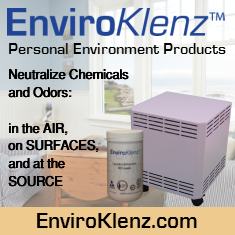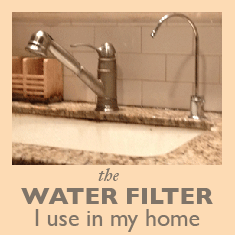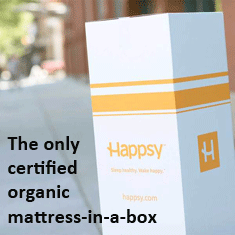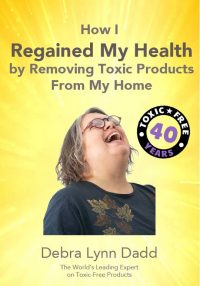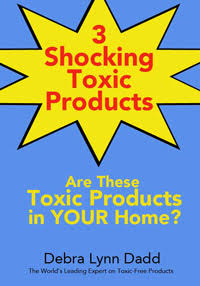Air | Humidity Control
Smell From Shoes
Question from Ethel
I just purchased a pair of boots which I absolutely love! I have a a rather wide calf so its hard to find boots to fit. The only problem is that the Faux Leather Accents is emitting a rather plastic smell (The type of odor one would smell when walking down the shoe aisle at Target) I called the company I ordered from in hopes that they would be able to contact the manufacturer to find out the actual material but was told that was not possible. I’m assuming its a type of plastic maybe rubber or even vinyl but am not able to differentiate the smell.
I realize I haven’t given much information here on the material but I wanted your opinion on how worried I should be about this smell? Also if I placed the boots in their original box after wearing would that reduce the amount of offgassing in the air? As you can see i’m grasping at straws here… 
Your professional opinion would be greatly appreciated!
Thanks so much!
Debra’s Answer
Unfortunately, I’ll bet it’s polyvinyl chloride (PVC), one of the more toxic plastics (also causes cancer). Storing the boots in the box will only help a tiny bit.
Personally, I wouldn’t wear these shoes.
MP3 Players
Question from RBES
Hi Everyone,
I’m looking into buying a MP3 player. I was wondering if you know of a particular brand that is the most environmentally friendly. I believe that macs claim to be. Do you know if this is true? Thanks for any help that you can give me.
Debra’s Answer
I haven’t done any research on this.
Readers?
Clothing with no permanent press finish
Question from Phil
Hi Debra,
You mentioned you mostly purchase regular cotton or linen clothing, but are careful to select these fabrics with no permanent press finish.
How do you know which cotton fabrics have no permanent press finish? Is there a particular brand you look for?
Thank you,
Debra’s Answer
Fabrics with permanent-press finishes are labeled “permanent press,” “easy care,” “wrinkle free” or some similar wording. It is on the label as a selling point, as some people want this.
I’ve never purchased a garment that was not so labeled, and then suspected it had a formaldehyde-based finish on it.
Cookie Cutters
Question from CJStewart
I am looking to buy some cookie cutters for use by small children playing with clay/dough. My two options are aluminum/stainless or polystyrene. The plastic would be less sharp, I think. But, of course, they’re plastic. Any input would be greatly appreciated.
Debra’s Answer
For this use, I don’t think it makes a lot of difference for health or the environment. They are both about the same in their impacts.
Baking with Palm Sugar
Question from Kim
Debra,
I have been able to find some palm sugar locally, and am planning on pulverizing it in a coffee grinder for use as a white sugar (powdered or granular) substitute. In your experience, does organic palm sugar behave like organic cane sugar in baking and/or confectionary applications?
Thank you so much for any guidance you may be able to provide!
Debra’s Answer
Yes, and it’s really delicious.
And it will raise blood sugar just like refined white sugar, though it is less refined.
Experience with Land and Sky Organic Mattress?
Question from Valerie W.
My husband and I are interested in purchasing an organic latex mattress. We went to a store and tried the ‘Heaven and Earth’ 100% organic style from Land & Sky and really liked it. Have any of you had any experience with this company/mattress?
Thank you,
Valerie
Debra’s Answer
Humidifier for Dry Winter Indoor Air
Question from S
Hi Debra, We converted from natural gas to heat pump electric in the spring due to MCS. I have found the air is so dry it is causing extreme dry eye problem etc. Has anybody else found this to be a problem and if so any great humidifier out there that is ok for one with MCS? Thanks s
Debra’s Answer
This has been asked and answered before, but I’m going to give the link here because this question was asked several times this week. See Q&A: Humidifiers. If you have something to add, please post a comment there.
Caesarstone Counter Tops
Question from R. Rhodes
Hi Debra –
I’m researching new counter tops for my kitchen and bathroom. You mention in “Home Safe Home” about high-quality stone for counter tops.
What about man made stone like Caesarstone? They say on their website that there is low VOC, but when you look at the MSDS it says “Chronic Exposure: The adverse health effects from crystalline silica exposure – silicosis, cancer,
scleroderma, tuberculosis, and nephrotoxicity – are chronic effects.” I’m assuming this would be the dust from the Caesarstone.
I’ve also read on your site that you have no problems with Silestone which is also man made.
Would you suggest natural stone over man made?
Debra’s Answer
In general, I like natural materials over manmade, but I see nothing wrong with Ceasarstone. Their website lists many environmental benefits and they are certified and recommended by multiple green organizations.
I’m not concerned about the silica warning. This is for silica DUST, as in when the material is being cut. There is no more danger to using this countertop than being exposed to sand on the beach, which is also silica.
Covering Paint
Question from R. Rhodes
Hi Debra –
We are hoping to buy a house that has recently been painted. We are going to paint again using OUR own paint no VOC paint, (Sherwin Williams Harmony). My question to you is, will painting over regular “smelly” paint with my no VOC paint cover up the paint smell and keep the toxins from leeching out into the air?
Thanks for all that you do!!!
Debra’s Answer
Paint is not designed to be a vapor barrier.
I would heat the house first until there are no more fumes from the old paint, and then apply your new paint.
Maple Sugar
Question from P. Wicks
Hi again! Just wondering if you know about using maple sugar. I wonder if you can use it in place of brown sugar and if there are any ratios to deal with, like 1 cup maple sugar to 1 cup of brown sugar.
Thanks–
Debra’s Answer
You can use maple sugar one for one for white or brown sugar. It adds very little maple flavor.
I haven’t used it in recipes on this website because it is just as refined as eating white cane sugar. Refined white sugar is made by boiling the juice of sugar cane until it is clarified and granulated. Maple sugar is made by boiling the sap of the maple tree until it is clarified and granulated.
Maple sugar is also difficult to find and is very expensive.
Styrofoam packaging
Question from Lisa
Dear Debra,
I try hard to buy things that do not have styrofoam, but often if I order something from a catalog or on-line, it is shipped in styrofoam.
The styrofoam often breaks apart, and little pieces get loose when I unpackage the item.
I’m wondering if this causes any health concerns from either particles/dust becoming airborne, or just being scattered around my home.
I also have a small child and I worry about my child ingesting small pieces of the styrofoam.
Am I worried about nothing, or should I return items packaged this way?
Debra’s Answer
First, let me say, that each and every one of us already has styrene in our bodies. It is ubiquitous in the environment. Even polar bears have styrene in their bodies.
Occupational Safety & Health Administration: Styrene Hazard Recognition gives a list of references about the toxicity of styrene and mentions that it causes symptoms ranging from irritation of the skin, eyes, and the upper respiratory tract to central nervous system symptoms such as depression, headache, fatigue, and weakness.
In my book Home Safe Home, I cited the National Adipose Tissue Survey of the National Public Health Service, a department of the Environmental Protection Agency, which showed how frequently chemicals are retained by our bodies and how common exposures are. Styrene topped the list, with 100% of the people tested having this chemical in their fat. If a chemical is in your fat, it means the body has stored it there to keep it out of your system.
But are your little broken styrene shipping peanuts a health hazard? Probably not. Not enough material and not enough length of exposure. A greater hazard would be hot coffee or soup or food in a styrene takeout container.
If you don’t want to receive these styrene peanuts (they aren’t biodegradable, though you can recycle them at many shipping stores), ask before you order if they are used in the packaging. That way you don’t need to return the item. If you do choose to not purchase because of the styrene peanuts, let them know they lost your business because of this.
There are shipping peanuts made from renewable corn that just melt when you put them in water. It’s called “biodegradable loose fill” (search on this term in your favorite search engine for more info and sources). You could recommend they use this instead.
Orthodonic work (braces) and safety
Question from Lisa
Dear Debra,
I may need to have some orthodontic work done by the dentist, and wear braces for a time.
This is metal, plastic, and rubber in my mouth for an extended period of time.
There is a chance I may also need a retainer, too.
I would be interested in hearing your thoughts on this in terms of health.
Thanks!
Debra’s Answer
I am not sure I am qualified to give an opinion on this as I have not thoroughly researched this. But I’ll say this…
Whenever you have plastic or metal in your mouth for an extended period of time, it could leach into your body. How much or what effect it would have, I don’t know. Readers, anyone have experience with this?
I do want to mention that in the 1930s, Dr. Weston A. Price, a dentist, traveled around the world to study the diets of traditional cultures. Dr. Price had noticed that the children in his practice had dental problems that their parents did not–more tooth decay and teeth that did not fit properly into the dental arch, which were crowded and crooked. He subsequently studied “primitive” peoples and found that when they ate their traditional diet, they had all thirty-two teeth, perfectly fitting into the dental arch, and perfectly formed. When they began to eat a modern diet, they had dental decay and bore children, in the very next generation, with crooked and crowded teeth. This is well documented in his book Nutrition and Physical Degeneration.
Braces wouldn’t be necessary if we ate foods in their natural state, not just additive-free, but as nature intended.
Is screen printing on clothing safe?
Question from Lisa
Hi Debra,
I am wondering what you think about screen printing on clothing items.
Avoid it? Or is it ok?
Specifically, I have seen that it fades over time with washing and drying. I’m wondering if this leaves any residues, etc in the washer or dryer, or additional pollution to the laundry waste water.
Is there anything you’ve read about screen printing and issues related to contact with the skin?
I read your blog often, and I find it very useful. I’ve also purchased all your books. Thanks!
Debra’s Answer
I don’t have any personal experience with doing screen printing, however, I did look up the MSDS sheets of some printing inks. Apparently, there is quite a wide variety, ranging from inks conaining no hazardous ingredients to inks that are made from PVC.
I remember purchasing a set of cotton flannel sheets some years ago that had a pattern I liked. When I opened the package at home, it had a strong odor of plastic. Instead of the pattern being dyed into the fabric, it was screened on top with a plastic ink. Not only did it smell, but the areas with the pattern felt like plastic–not at all soft like the flannel sheet.
I washed these sheets half a dozen times and the smell did not go away. I finally just threw them in the garbage can.
I know too that a screened-on design does not last through many washings. It will peel off.
Some inks do have metals in them, particularly the “metallic” inks.
I personally tend to not purchase clothing or other items that have been screen printed. If you want to, check with the printer and obtain the MSDS for the ink first.
Natural Sweeteners & Glycemic Index
Question from Lynne
I have a few questions about sweeteners that will “crack” to make hard candy: unrefined cane sugar, barley malt syrup, brown rice syrup, agave nectar, honey.
Of all the ones listed, which has the lowest glycemic index number, and which one would be the healthiest choice?
I also wondered if molasses would work and if it is a healthy choice – I noticed it’s not included in the list of natural sweeteners to enjoy.
Thanks,
Lynne
Debra’s Answer
Agave is definitely the lowest and honey is the highest. The others are in the middle.
There is a glycemic index that assigns numbers to foods, but I don’t use that as there is a high variation of actual glycemic response from person to person. So here is the relative general glycemic index of the sweeteners currently used in my recipes:
High
Medium
Low
Negligible
Safe or Least Toxic Wrinkle Free Clothing
Question from Cheryl
Hi Debra and all,
Can you recommend any wrinkle free or highly wrinkle resistant clothing brands/merchants or lines in general, but especially for men’s button down shirts? Timewise, ironing just isn’t an option and since we know how toxic dry cleaning is, for several years we’ve been buying wrinkle free shirts only to discover how toxic they are. If you can’t recommend specific merchants, are there certain things to look for concerning the fabric content to insure least toxicity and greatest resistant to wrinkles? Does it matter where it is made because many of them are made in Thailand, China, India, Indonesia etc. Thank you so very much.
Debra’s Answer
Sorry, I don’t think there are any button-down shirts that are nontoxic and wrinkle-free.
I don’t have a lot of time to iron either, so I choose clothing that doesn’t wrinkle much. Mostly I wear knit tops and cotton sheeting pants, and in the wintertime, corduroy and flannel. But I am not going to an office everyday. Clothing was one of the reasons I decided to work at home.
I’ve learned that if I take my clothes out of the dryer immediately and don’t let them sit in a tumble, they don’t wrinkle much. I just shake them out and hang or fold or roll them up and put them away. Of course, this isn’t a crisp iron, but I don’t need that.
If you don’t want to iron your cotton shirts, wash them yourself and take them to a dry cleaners for “iron only.”
Shower stalls
Question from CJStewart
Can you recommend a green, eco-friendly shower stall? I would have thought that tiles were the best option, but I was told that they absorb water and thus tend to produce mold.
Debra’s Answer
I have tiles and they don’t produce mold.
I don’t know of any shower stalls that are not made of plastic.
Enamel Teapots
Question from cr
Anybody have any idea if this type of tea pot is safe to use? The bottom is stainless steel. Cathy
Debra’s Answer
Test all ceramicware with a LeadCheck test kit, which you can purchase in the paint department at Home Depot for about $5.
Recycling Styrofoam
Question from Ethel
Debra,
I’m curious if you or any of your readers has any information on how to recycle (if its even possible) those styrofoam peanuts that come in boxes when you have something shipped. Also the styrofoam that surrounds products in boxes to keep from breaking.
I’ve been holding on to them for months from various packages but am not sure what to do with them.
Any info on this would be greatly helpful.
Thanks Everyone!
Debra’s Answer
Call whoever collects your other recyclable materials and ask them if they accept it or what you should do with it. All local recycling centers are different.
Also, many pack-and-ship places will accept styrofoam peanuts or packaging. Call around and ask.
More on Steam Irons and MCS
Question from jenbooks
Hi Debra, I am still having a great deal of trouble finding a nontoxic iron and wonder if others have had this issue. I know you say your Rowenta is fine. I’m at my wit’s end, because I have a small washer in my apartment and no dryer, and cannot use the dryers (or washers) in the laundry room as they use so much fabric softener and bounce dryer sheets.
My little washer is excellent and does small loads so I do frequent small loads.
My problem is ironing the clothes that air-dry. They get very wrinkled.
A new Black & Decker iron had a very bad chemical smell in the steam and a metal smell came off on my clothes. My boyfriend’s newish cheaper Black & Decker also has a chemical smell but he hasn’t used it much at all so it’s virtually new (I smell the inner solvents, glues, aluminum, plastics and I don’t know what else, coming off the steam). I purchased a 1991 Rowenta off of Ebay and did not love that smell but it was more familiar. I haven’t ironed with it though but I guess I will try today; I’m mortified of ruining clothes because I mostly have cotton and it absorbs things. It smelled sort of like “old lady iron” (she had gone into assisted living apparently). I tried a vintage 1940 iron but that was stupid, as it smelled of mothballs and whatever they cleaned it with to make it new and shiny and was the worst iron of all and I threw it out.
Now I have purchased but not received, a flat iron with no steam from Vermont Country store after googling all over the internet and finally finding it recommended on an MCS site.
Most irons are now made in China and I find a lot of stuff made there is plain old toxic. Who knows what they coat plastics with to make them resist heat. Who knows what glues and solvents they use.
Debra’s Answer
Painting my child’s bedroom
Question from Johanna
I want to paint a mural on my son’s bedroom wall. He is currently not in this room and won’t move in there for about 6months. He is only 3 months old and staying in a section of our bedroom.
I want to paint a mural with bright colors. This is the first mural I have ever done this, so I want to paint with something easy.
I have looked at fresh air paints, but they don’t have anything bright. I looked into milk paints, but it seemed like it would be difficult and from what I read the milk painted walls can easily get dirty.
Since my son won’t move in there for another six months can I just used regular wall paint, like ralph lauren and art deco paint for the mural? Will it have enough time to air out?
I live in GA and it can be warm enough at times to keep the window open for awhile during the day to let fresh air in.
Do you have any other suggestions? I am also breast feeding him, can this be a problem if I am the one painting it? Oh and what am I hearing about turning the heat up warm enough to help it dry faster…. what should the heat be turned up to?
Debra’s Answer
If you are breastfeeding your child, I would say don’t paint the room yourself with any kind of paint. The fumes can get right into your body and into your breastmilk and into your baby.
If the only paints you think you can use are regular water-based latex paints, then have someone else paint, and you and your baby stay out of the room until the paint it cured.
I would recommend actually that you leave the house altogether for a few days while the painting is being done and have the heat on “high” to quickly bake the fumes out.
Of course, this doesn’t allow YOU to do the artistic work of painting.
My best suggestion would be to use some kind of nontoxic children’s paint or milk paint, and then have someone put a clear protective sealer over it.
Are organic mattresses truely free of flame retardant chemicals?
Question from Johanna
Does anyone know if the below information about organic mattresses is really true?
www.safecribbeds.com/faqs.asp
Debra’s Answer
I believe that this is incorrect. I personally know some manufacturers of organic mattress and they put no chemical flame retardants in their mattresses. Wool needs no chemicals to be naturally flame retardant.
I think they don’t understand. Not only are no chemical flame retardants used in organic mattresses, but cotton is not used as a flame barrier, as they say.
Now, I haven’t looked at every organic mattress on the market, I’m sure, but the ones I am familiar with do not have flame retardant chemicals.
Is ovenware made in China safe?
Question from JRW
There is plenty to be concerned about when purchasing products from China. Contaminated foods and goods are known to have been produced there and then exported to many countries. I recently found “ovenware”(similar to Pyrex) that was made in China and wondered if it was safe to use! I purchased it at a Target store about 1-2 years ago. It is a white ceramic, glazed on the inside, outside and handles with the underside an unglazed finish. There is a black label indicating it is “dishwasher, microwave, freezer, and oven safe and made in China”. It sets in a light weight silver metallic carrier/tray. Your opinion is appreciated.
Debra’s Answer
First, we can’t assume BROADLY that all products or even a specific type of product made in China or anywhere else is safe.
Certainly we have all heard reports of atrocious bad practices in China, but that doesn’t mean that ALL products made there are unsafe.
Like any other ceramicware, I would test it using a LeadCheck test kit, which you can buy for about $5 in the paint department of Home Depot.
Is Chapstick safer than Lip Stick?
Question from YH
You wrote in your book that lip stick is very toxic. How about chapstick? I don’t have the packaging anymore, but it is so small that no ingredient is listed on the chapstick itself. What are some ingredients in chapsticks that are bad for people? I would guess that some are not too good for consumption. Mine taste like a very sweet tangerine or orange. I like the taste a lot, but of course, I guess no fragrance is better. Thanks
Debra’s Answer
Interestingly, ChapStick is labeled as a drug.
Active ingredients:
Padimate O 1.5%………………Sunscreen
White petrolatum 44%………….Skin Protectant
Inactive ingredients:
arachidyl propionate, camphor, carnauba wax, cetyl alcohol, D&C red no. 6 barium lake, FD&C yellow no. 5 aluminum lake, fragrance, isopropyl lanolate, isopropyl myristate, lanolin, light mineral oil, methylparaben, octyldodecanol, oleyl alcohol, paraffin, phenyl trimethicone, propylparaben, titanium dioxide, white wax.
Is cooking in stained glass cookware safe?
Question from YH
After reading Dr. Marcela’s article on stainless steel found on your website, I think it is time for me to buy Vision cookware. I read that to produce stained glass, lead is used. Will lead leak into food prepared in stained glass cookware (Corning Vision)?
Is it practical to buy glass pans? I read that food would stick and that glass cookware is one of the stickiest (food also stick on stainless steel; cast-iron is very non-stick). Also, I am afraid that it might shatter. I think having water in pots is safer than stir-frying in glass pans (which may be dry). I am still afraid that glass cookware may break and shatter any time. Thanks
Debra’s Answer
First of all, colored glass doesn’t contain lead. See Q&A: Colored Glass and click on the “Colored Glass Chemistry” link to see what is used to make different colors of glass.
Lead is used in the solder that holds the glass together to make colored glass windows. But it is not in the glass itself.
I myself have used Corning Visions cookware for over twenty years without a mishap, though others have reported otherwise (see Q&A: can visions cookware and pyrex shatter while cooking?). I do not stirfry in it, but use pots for things like warming soup, boiling eggs, etc.
Winter coats and other winter gear
Question from Lisa
Dear Debra,
I need a good winter coat for when I travel half the year to a cold and snowy climate.
I have looked everywhere, but major brands seem to have water proofing, rain proofing, etc coating, and almost exclusively use nylon and acrylics, or dry clean only wool.
What do you think of these coats, hats, scarves, mittens, etc? I have searched high and low for washable wool, or for cotton winter wear, but have found virtually nothing.
Do you have something your recommend or that you use yourself?
Also, if I buy a nylon coat with the durable water repellent and flame retardant treatments, is it safe to wash in my washing machine or should I take it to the launromat?
Debra’s Answer
Winter wear can be difficult.
I live in Florida, where the temperature rarely gets below 50 degrees, but I do travel to cold climates and so do need to keep warm.
Here’s what I do.
I don’t have a winter coat.
Another thing I’ve been considering is making a big wool poncho. But I really don’t have a need for it.
I have several big cardigan sweaters I can put over other clothes, and these are mostly what I use instead of a coat. I have a couple of cotton sweaters and a 100% wool sweater that I bought last year at Macy’s. Not everything is mothproofed.
Heat Lamp and Different kinds of light
Question from YH
I plan to buy a heat lamp and put under the table where I usually seat (imitating the Japanese’s Kotatsu). Heat lamps emit infrared light. Is the light safe?
I was scared of the hydrogen lamp that I have been using for 4 years because it may emit radiation (even though the piece of glass is supposed to stop all the radiation). Is hydrogen lamp safe?
How about flourescent and incandescent light? I heard that fluorescent light also emits radiation, but I am not sure. Also it cannot be recycled…
Is incandescent light totally safe? I know that it uses 4 times more energy than flourescent lightbulbs… Thanks
Debra’s Answer
Washing Previously Dry-Cleaned Clothing
Question from jag
Some of my son’s cotton, nylon and otherwise washable clothing was mistakenly dry-cleaned, although I was advised it was a “green dry-cleaner” whatever that means. It usually means they use regular cleaning fluid but dispose of it properly and keep the fumes to a minimum. The city where this was done has no CO2 cleaners listed, which I’m told is least toxic. If I re-wash these items at home, won’t the dry cleaning fluid or “perc” come out in the wash, create fumes and otherwise contaminate subsequent loads? I recall this happening to me decades ago so I am wary about trying it again. If there is any doubt, I’d rather toss the clothes. I have a front loading machine and some brands advise against this.
Debra’s Answer
I don’t have any experience with this.
Readers?
Raw and Pasturized Milk
Milk has come up in some of the blog comments this week, and I have been learning more about milk recently, so I wanted to pass along a bit of what I am learning.
First, the milk we think of as milk is not “real milk” as it comes from the cow. It is processed to kill bacteria (pasturized), remove fat (low fat and skin milk), and incorporate fat (homogenized). Real milk separates (sold as “cream top” where the cream is floating on the top), contains all it’s fat, and is loaded with enzymes and nutrients that are destroyed by heat during pasturization.
In times past, milk fresh from cows fed on pasture grass was used as a cure for many diseases. Today’s milk doesn’t have that healing quality.
Unfortunately, it is illegal to purchase raw milk for human consumption in most states. However, we can buy cheese made from raw or “fresh” milk (cheese made from pasturized milk says “pasturized milk” on the ingredient list).
For more information on raw and pasturized milk and their health effects, go to the Real Milk website. They are campaigning to have real milk widely available in the US.
Raw milk cheeses are sold in most natural food stores. For mail order sources, see Debra’s List: Food: Cheese.

 That being said, I really need some input on the composting options available. We want one that we can add to continuously. We tried the NatureMill Pro, but we’re not going to keep using it. Long tiring story… We need one that we can use for kitchen scraps, etc. We want it to be outside and making mulch year-round. Suggestions?
That being said, I really need some input on the composting options available. We want one that we can add to continuously. We tried the NatureMill Pro, but we’re not going to keep using it. Long tiring story… We need one that we can use for kitchen scraps, etc. We want it to be outside and making mulch year-round. Suggestions? 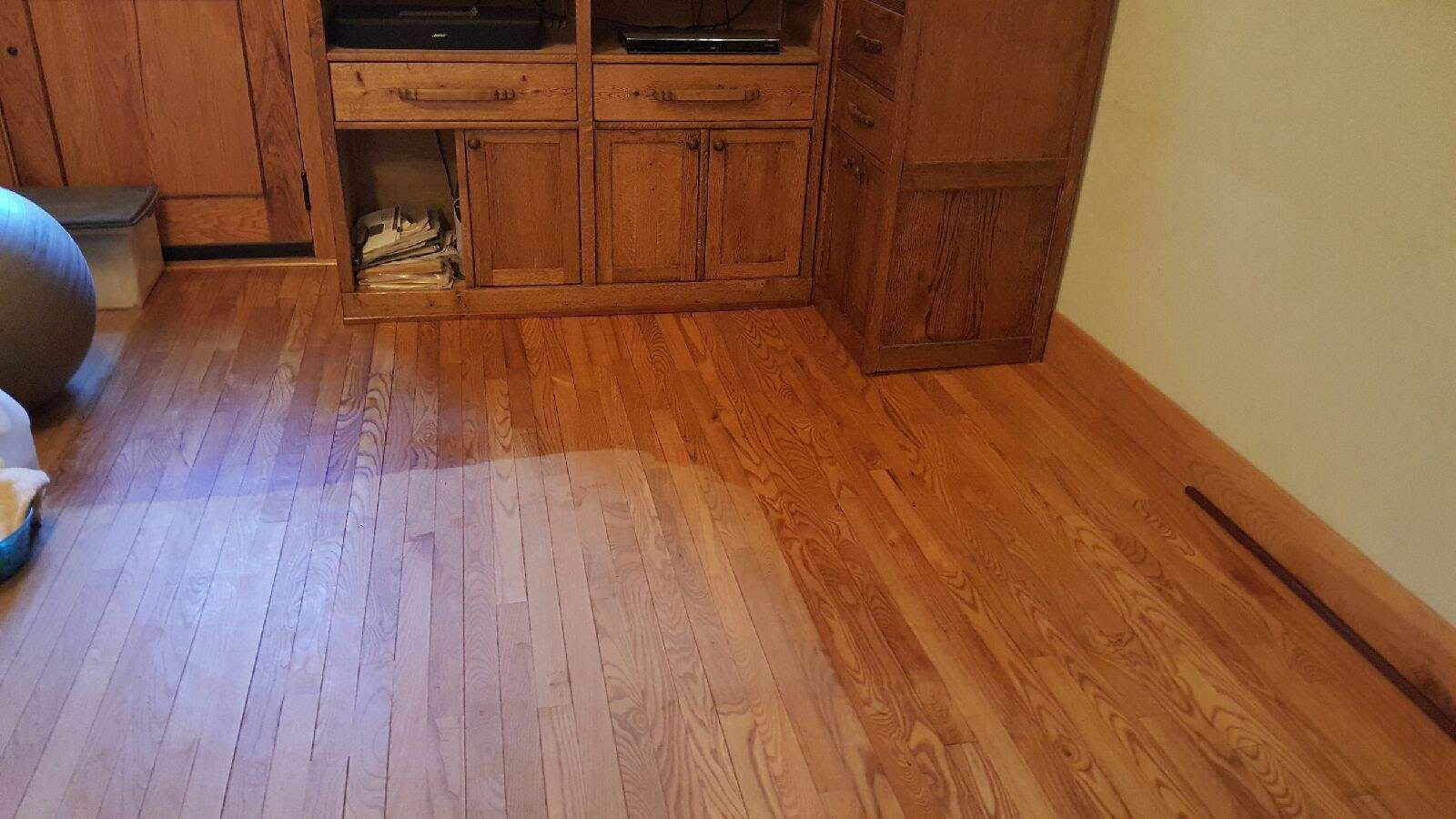 The portion on the right is dry and has been wiped down. The portion straight ahead I did this morning and the oil is soaking in and drying. Obviously the dull part on the left is the floor before I refinished it. I love this!
The portion on the right is dry and has been wiped down. The portion straight ahead I did this morning and the oil is soaking in and drying. Obviously the dull part on the left is the floor before I refinished it. I love this!